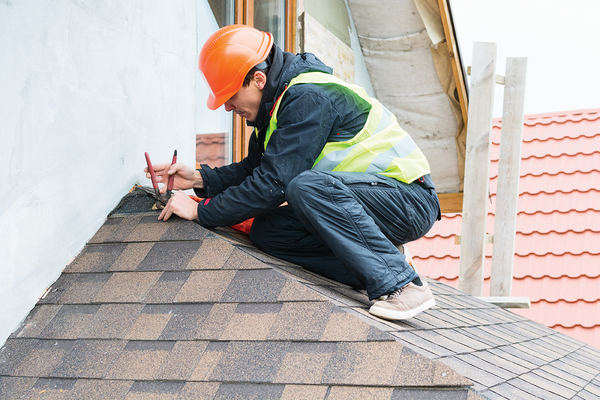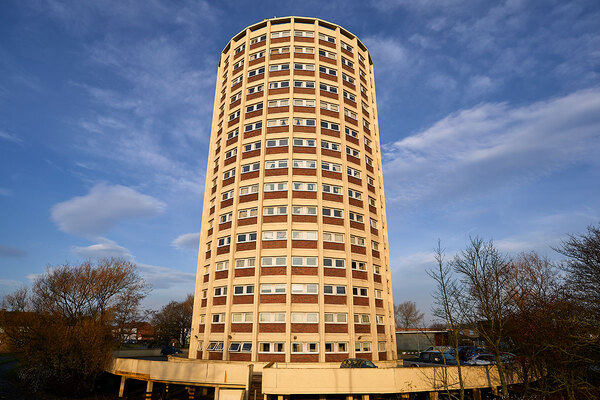You are viewing 1 of your 1 free articles
Time to prepare for the new guidance on solar panels
Stuart Nicholson, roof systems director at Marley, outlines 2024’s update to the Technical Standards of the National House Building Council (NHBC) for the ventilation of integrated, in-roof photovoltaic (PV) panels
The new Labour government has already set out its intention to further increase the installation drive behind solar panels on UK rooftops. Termed “a rooftop revolution”, the strategy is designed to use renewable technologies, such as solar, to help bring down domestic energy bills, build more sustainable housing stock and address the climate crisis.
This plan builds on the increasing popularity and specification of PV panels in recent years. Government statistics from 2023 show that solar installations now stand at over 1.35 million, with the largest annual increase in solar panel installation for seven years taking place between 2022 and 2023.
In the social housing market, solar panels on new-build developments or significant refurbishment projects can be a key specification choice to ease energy cost pressures for tenants, with predictions that bills will remain high for the foreseeable future.
To help drive these improvements, the Social Housing Decarbonisation Fund (SHDF) provides financial support to improve the energy performance of social housing across the country. The multibillion-pound funding is transforming social housing stock to ensure the delivery of safe, warm and insulated homes, which improves the properties’ Energy Performance Certificate (EPC) rating and may reduce energy bills for occupiers.
“As the number of photovoltaic panels on UK rooftops escalates, installation is increasingly in the spotlight to ensure product suitability and fixing standards are being met”
This is part of a wider push to tackle energy-efficiency challenges and drive a decarbonisation strategy ahead of 2050’s net-zero target. The fund’s main aim is to uprate and improve social housing through several measures – of which solar panels will be one – so properties can attain an EPC rating of Band C.
As the number of photovoltaic panels on UK rooftops escalates, installation is increasingly in the spotlight, to ensure product suitability and fixing standards are being met.
Part of this scrutiny has included recent changes to guidance offered by the NHBC, which oversees standards in the industry. The NHBC has updated its Technical Standards for 2024 and turned its attention to ventilation guidance when integrated, in-roof solar panels are installed.
A key update has addressed compatible roofing underlay and ventilation under BS5250 – the management of moisture in buildings for all roof coverings – to prevent trapped moisture forming on the underside of the solar panel and reduce the risk of rotting timbers.
The new standard contains revisions to clause 7.2.15 (ventilation, vapour control and insulation). This now stipulates that, where arrays of integrated in-roof solar panels are used, the whole roof covering should be treated as air-impermeable, unless the panel manufacturer is able to demonstrate its system is air-permeable.
“Roofs with integrated PV panels will now be classed as air-impermeable as standard, even if the roof tiles themselves are air-permeable”
As a result, roofs with integrated PV panels will now be classed as air-impermeable as standard, even if the roof tiles themselves are air-permeable. So, including even a small number of solar panels means the whole roof is considered impermeable and should be treated as such, unless it can be proven otherwise.
The NHBC states that for an air-impermeable roof covering there is a greater risk of interstitial condensation on the underside of the underlay and the external covering, if the correct ventilation strategy is not used.
There are several methods of ventilating a roof with an air-impermeable roof covering and several factors to consider, including the type of membrane used, the roof pitch, the span, the position of the insulation (cold roof or warm roof) and the type of ceiling (such as normal or well-sealed).
In Marley’s case, we use roofs installed with our solar panel tiles that don’t require counter battening, providing the roof is ventilated at the eaves or at high level where required. This means they will fully comply with the current NHBC standards and BS5250 when ventilated in line with our technical guidance.
Stuart Nicholson, roof systems director, Marley
Sign up for our asset management newsletter
Already have an account? Click here to manage your newsletters












